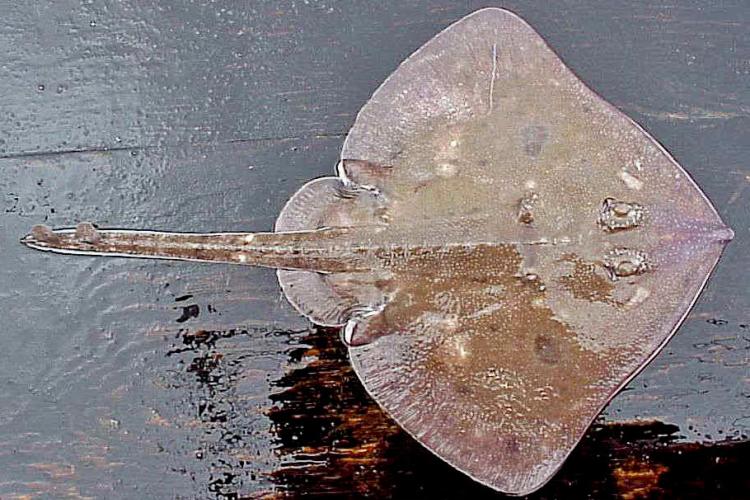Skates are caught incidentally in Alaska commercial fisheries targeting other species, and interest in developing a targeted skate fishery has been growing as coastal communities seek to bolster their economic resilience. However, skates are among the most vulnerable species in Alaska ecosystems: because of their slow growth, late maturity, and low reproductive rate they may easily be overfished. Scientists at the Alaska Fisheries Center assess skate populations and research their biology, interactions with fisheries, response to environmental changes, and economics to provide the scientific advice needed to manage skate populations and potentially develop a profitable and sustainable fishery.

Aleutian Skate.
Assessing Populations
Fishery managers need to know how many skates there are, where they are, and how their populations are changing. Our scientists collect this information during bottom trawl surveys and present our data, analysis, and recommendations in Stock Assessment and Fishery Evaluation Reports.
Tracking Movements
To better understand skate distributions and what habitats are important to them, we collaborated with our partners to deploy satellite tags on skates in the Gulf of Alaska to follow their movements for one year. Information from this study will aid in developing appropriate spatial management plans for skates.
Developing Ageing Techniques
Accurate age and growth information is crucial for sustainable fisheries management. The Alaska Fisheries Science Center’s Age and Growth Program has helped develop and refine techniques using growth rings on vertebrae for ageing skates. We validated these techniques using radiocarbon (14C) signals from bomb testing conducted in the late 1960s to establish dates of growth band formation in longnose skate vertebrae.

Studying Reproductive Behavior
Understanding the frequency and timing of reproduction is essential for managers to set catch limits to prevent overfishing. We are researching the reproductive biology of skates in Alaska with a focus on the characterization of skate nursery areas and approaches for nursery conservation in the Bering Sea. We also collaborate on reproductive studies of skates with the Pacific Shark Research Center at Moss Landing Marine Laboratory.
Identifying and Discovering Species
At least 15 skate species glide through Alaskan waters, including new species recently discovered and described by our scientists. Skate identification is difficult because many species share a similar shape and coloration. By refining our ability to identify species in the field, we are dramatically improving our ability to conduct scientifically rigorous investigations of the skate populations of Alaska. As genetics plays an increasingly important role in understanding skate diversity, we are also developing new ways to identify skates through tissue samples and genetic studies.

